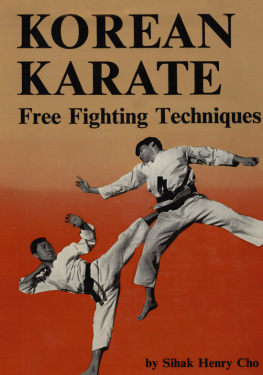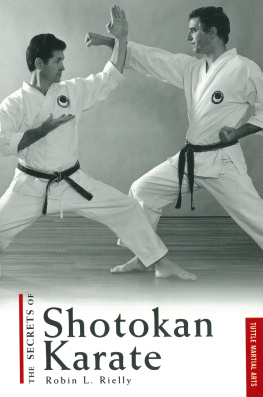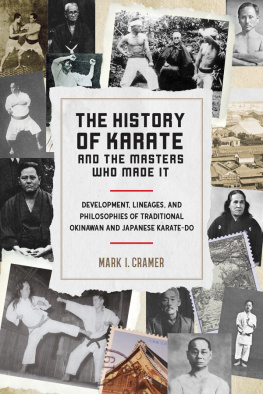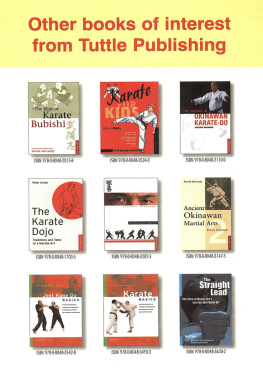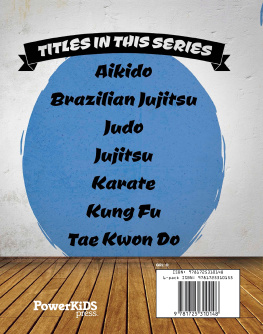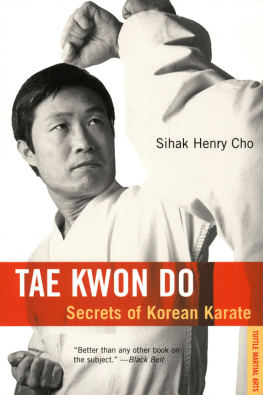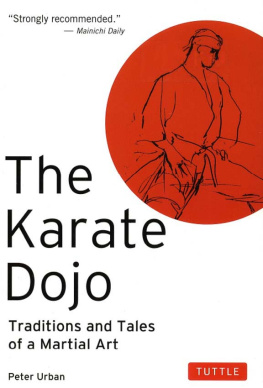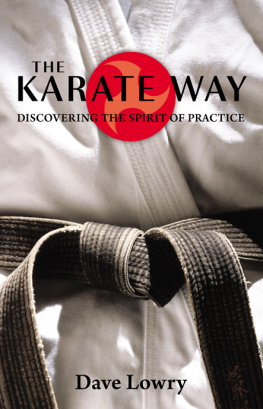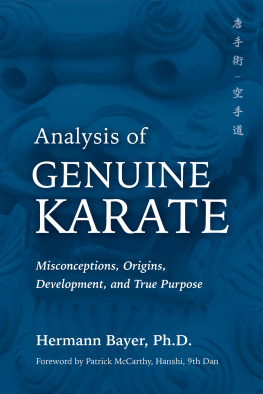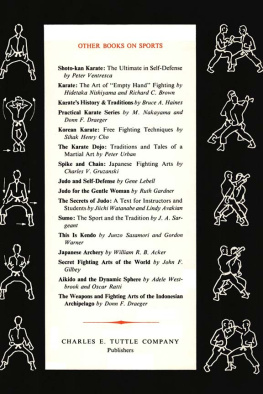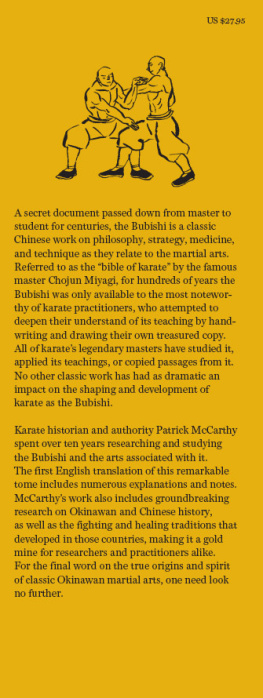Historical Background

The origin of karate as a simple form of self-defense is somewhat obscure, because ever since the beginning of mankind there have no doubt always been some forms of fighting techniques. Many, however, agree that karate as a martial art had its earliest beginnings in India thousands of years ago, where it reached a high stage of development. Indian folklore, history, dance, and drama make much of individual warriors, princes, and gods who accomplished mighty battlefield feats with their bare hands. Karate forms can also be seen in many works of art and particularly in temple sculptures which show warriors in positions similar to those of karate today.
Karate as a true martial art form was brought to China about 1500 years ago by the Indian Buddhist monk, Bodhidharma (Daruma), and it was studied with the emphasis on mental and physical development. Bodhidharma taught karate to the Chinese monks at the monastery of Shaolin-ssu whose residents later became famous as the foremost champions of fighting techniques throughout China. Undoubtedly, karate must have been accepted as a formal activity among the religious people and, furthermore, was widely developed among many other people at the time. It was the first time in its history that karate received notice, and its distinctive purpose was for self-defense and as an aid in enlightening the mind.
As time passed and karate became known as a lethal weapon, karate techniques began to be applied for offensive purposes in national wars or in internal conflicts caused by political upheaval. Many karate students traveled throughout northern and southern China, and trained military groups of many organized societies in the martial arts. A formal karate-training school for the furtherance of military training in this original art was thus established. These societies were the prime force in the Boxer Rebellion, and most of them are still in existence. In this tradition, karate masters commanded unarmed villages capable of applying karate techniques for offensive purposes in local conflicts and to meet the national crisis of war.
Once karate techniques were applied to war, as is to be expected, they were quickly adopted by many neighboring countries for both offensive and defensive purposes. Many countries, which had had their own fighting forms, accepted the scientifically developed karate movements, giving their own natural toughness to it, changing the techniques in the way best suited to their own national character. For a long period of time from then on, karate was developed in many places by many different authorities under many different philosophies and ideologies.
Characteristically, karate techniques were mainly applied for defensive purposes, as can be seen throughout its history. Karate, with its scientific body movements, came to be known as a lethal weapon which could be used against abusive laws; therefore, it was not welcomed by the rulers of the country and was developed secretly in many different geographical regions, from which came the different karate styles seen today. At this time, the major purpose of karate training was defense against injustice; the trainees' imaginary opponents were the thieves and bandits who used weapons against the common people who were forbidden by law to possess them.
"Okinawa-te" is one of those karate styles which developed historically and emerged as a distinct style. Karate was introduced to Okinawa by 17th-century Chinese warriors and missionaries and was superimposed on the original Okinawan-fighting system. The prime concern of the people was that karate techniques enabled them to protect themselves without the prohibited weapons, when the law itself was not strong enough or not sufficiently enforced to protect the rights of their families and themselves.
Through arduous study and by natural evolution, modern-day karate began to develop by the turn of the 20th century. It is basically rooted in its original techniques, but the enormous support of the people of many countries such as Japan, Okinawa, China, and Korea gave the impetus for the creation of a world-wide karate. Many different styles of karate are seen in modern times, but the philosophy of modern karate, embodying control, discipline, concentration of body and mind, sincerity and understanding is common to all styles. Under the leadership of many karate masters, such as Master Gichin Funakoshi who is directly responsible for the recent introduction of Okinawan karate into Japan, modern karate has been developed, giving rise to many professional karate practitioners all over the world.
Applied Arm Block
Double-Arm Block (Yahng-pahl Makgi)
The double-arm block is the forearm block performed with both arms in an outward or inward direction. In the double-arm block, the actual block is made with one arm whereas the other arm follows it and is placed across the front part of the body to ensure a safe defense. This arm placement usually results in a good guard and is somewhat similar to the free-fighting position. The swinging motion of the non-blocking arm in conjunction with the actual blocking arm usually provides a strong block. It is preferably made in a half-front-facing posture with a long-distance stance which provides a strong body position. The double-arm block can be made with the knife-hand edge which will be explained in Section 12. The double-arm block can be used for either midsection or high-section defense.
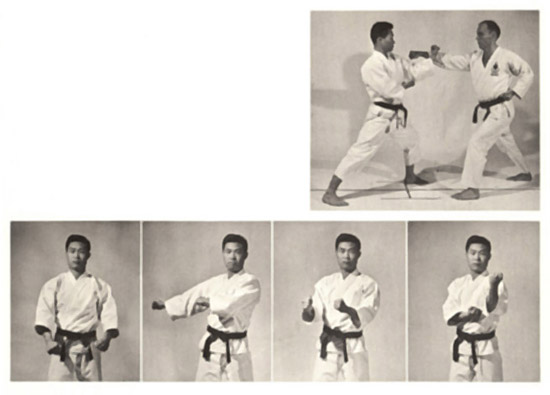
Outward Double-Arm Block. To make an outward double-arm middle block in natural stance with the left forearm, bring the left arm to the right waist and at the same time extend the right arm to your right. Then, both arms swing to the left with the body-twisting motion. The block with the left arm is performed in the exact same procedure as in the outward middle block, while the right forearm moves straight to the left until it reaches the right-side body line and then blocks in with the fist near the left elbow while turning upward. The right arm remains close to the body without touching it, with the shoulder closed. The right palm faces upward.
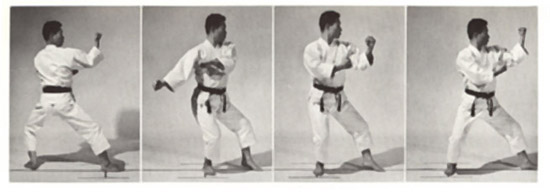
Outward Double-Arm Low Block. To make an outward double-arm low block in natural stance with the left forearm, first bring both arms to the ready position: the left arm is placed directly over the right shoulder with the palm facing the cheek; and the right arm with its elbow bent is placed on the right side with the elbow slightly lower than shoulder level. Then, the left swings in the same manner as with the outward low block, and the right arm moves toward the solar plexus turning the palm face upward as soon as it passes the right-side body line. The right shoulder is closed and the fist remains to the left of the solar plexus. The whole block is made in a body-twisting motion.
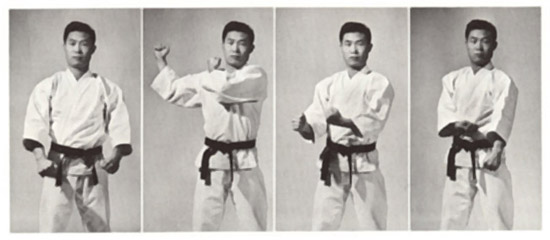
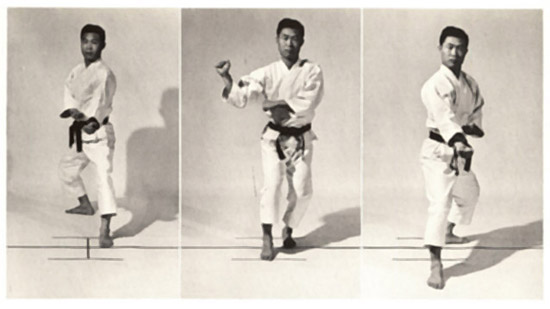
Inward Double-Arm Low Block. To make an inward double-arm low block in back stance, first step forward and prepare for the execution of the block by placing the right arm at an approximate 45-degree angle on the right side with the palm facing straight forward, and the left fist under the right shoulder, palm facing upward. Then, swing the right arm downward and simultaneously twist the palm inward to face up as soon as it passes the right-side body line. The block is made with the outer surface of the right arm and the left arm serves mainly to guard the open area of the front body. The right arm must remain inside of the right-side body line with the elbow slightly bent.

